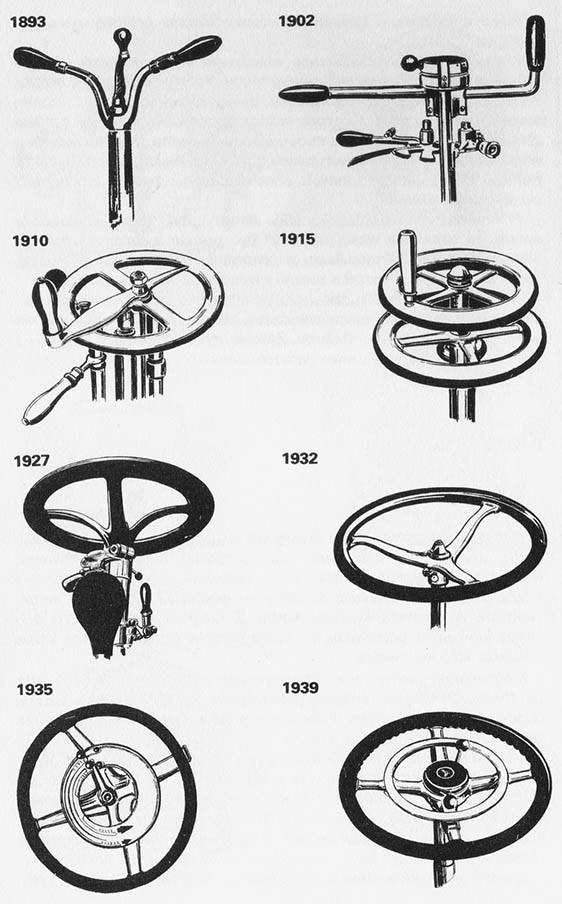Steering wheels on old cars.
The first horseless vehicles differed from their predecessors only by the crank used to steer the front axle. Vehicles with a steering column, placed in the center, made an unusual impression and were called a coffee grinder - because the steering was carried out by turning the crank. Over time, the slanted steering column tilted more and more backwards and the straight crank replaced the steering wheel.

It was difficult to steer the vehicle due to the overload of the front axle, that sometimes all passengers had to help. Cars with smaller front wheels were easier to drive, but cornering was risky.
Without the steering system, the carriage would never become a car. Therefore, Daimler's invention of St. 1889 r "and by Benz w 1893 r. independent steering, allowing the front wheels to be steered separately with a different swing radius, was a significant event. For joy, that he had solved the steering problem. Benz named his new car Victoria.
The driver's seat in the first vehicles was equipped not only with a steering crank, but also in other mechanisms such, how: steering lever, lever for moving the drive belt, fuel mixture regulator, manual accelerator lever and advance controller.
The number of the steering wheel arms also changed constantly. For many years, five arms were reserved for one brand - French Renault. It took quite a long time for European companies to take a step towards the three-spoke steering wheel, which was produced in America in the late 1920s.
In the post-war period, a two-spoke steering wheel appeared, a w 1955 r. Citroen has launched its typical single-arm model. Over time, the steering wheel not only played the role of a steering mechanism, but it has also become a stylish feature of individual car brands.